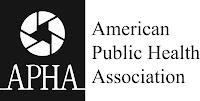It's been 6 months since the health reform bill was passed. Confused about what is in the health reform bill? Confused about what it means for you? About when things will occur? Then, a great resource to check out is: Health Reform Hits Main Street, a short animated "YouToons" video by the Kaiser Family Foundation.
Last week (Thursday, Sept 23rd) a number of provisions of the bill went into effect. Six of them are as follows: One, insurance companies (for employer plans) are no longer able to deny health insurance coverage to children with pre-existing conditions, such as diabetes or asthma. Two, lifetime limits on coverage are dropped, meaning there is no lifetime limit on what you spend on hospital stays or other medical costs. Three, free preventive care must be given by new health insurance policies purchased. These things include preventive screenings, immunizations, and other preventive tests cannot have a copay. Four, insurance companies are not allowed to drop you from coverage when you get sick and additionally, they can't look for an error on your application form and then deny coverage based on that. Five, there is an expanded appeal process for denied claims, meaning you can do an external appeal to an independent third party (instead of just to your insurer directly). Six, dependent children under the age of 26 can remain on their parent's health insurance policy, as long as their job doesn't offer insurance. The under-26 population are currently one of the most likely to be uninsured groups, and allowing them to be on their parent's plan will generally save money (to pay for other provisions above) by allowing younger and healthier into the insurance pool to reduce the overall risk and thus, premium costs. Go to Getting Covered.org if you have questions about how the dependent coverage rules work in your state.

















